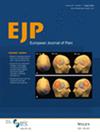Perception and Impact of Transcranial Magnetic Stimulation in Patients With Chronic Neuropathic Pain: A Longitudinal Qualitative Study
Abstract
Background
Repetitive transcranial magnetic stimulation (rTMS) is recommended as a third-line treatment for chronic neuropathic pain. Because of its non-invasive nature and limited side effects, it is considered a good therapeutic option. rTMS efficacy on chronic neuropathic pain has been demonstrated in numerous quantitative studies. However, there are no qualitative studies to support these quantitative data.
Methods
Included patients presented with peripheral neuropathic pain related to polyneuropathy (n = 6), radiculopathy (n = 3) and traumatic or surgical nerve injury (n = 3). The target of the rTMS was the primary motor cortex. We conducted a longitudinal qualitative study consisting of two separate semi-structured interviews for all 12 participants from four different French multidisciplinary pain centres, one before starting treatment and the other after 2 months of rTMS treatment. Two separate manual analyses by two researchers were carried out, as were software analysis and data triangulation.
Results
Our study revealed an overall positive impression about rTMS treatment, with improvements in pain and activities of daily living. However, most participants felt that information on this treatment was inadequate because of difficulties in understanding the treatment mechanism. These difficulties frequently led to misrepresentations about the treatment, which could result in secondary fears, particularly in relation to the fear of cognitive capacity loss.
Conclusions
The results suggest possible areas for improvement, both in clinical practice and in care organisation. Information provided to patients could be optimised, with a focus on more personalised care, considering preliminary representations and fears, so as to further encourage adherence to treatment. Furthermore, it is necessary to train healthcare staff in order to optimise the care pathway for patients suffering from intractable chronic pain and to limit the risks of delays in treatment.
Significance Statement
rTMS treatment showed overall positive effects on pain and quality of life. Many participants lacked clear understanding of the treatment mechanism, leading to fear and misinformation. Improvements are needed in patient education and healthcare staff training to support therapy compliance and optimise care.

 求助内容:
求助内容: 应助结果提醒方式:
应助结果提醒方式:


